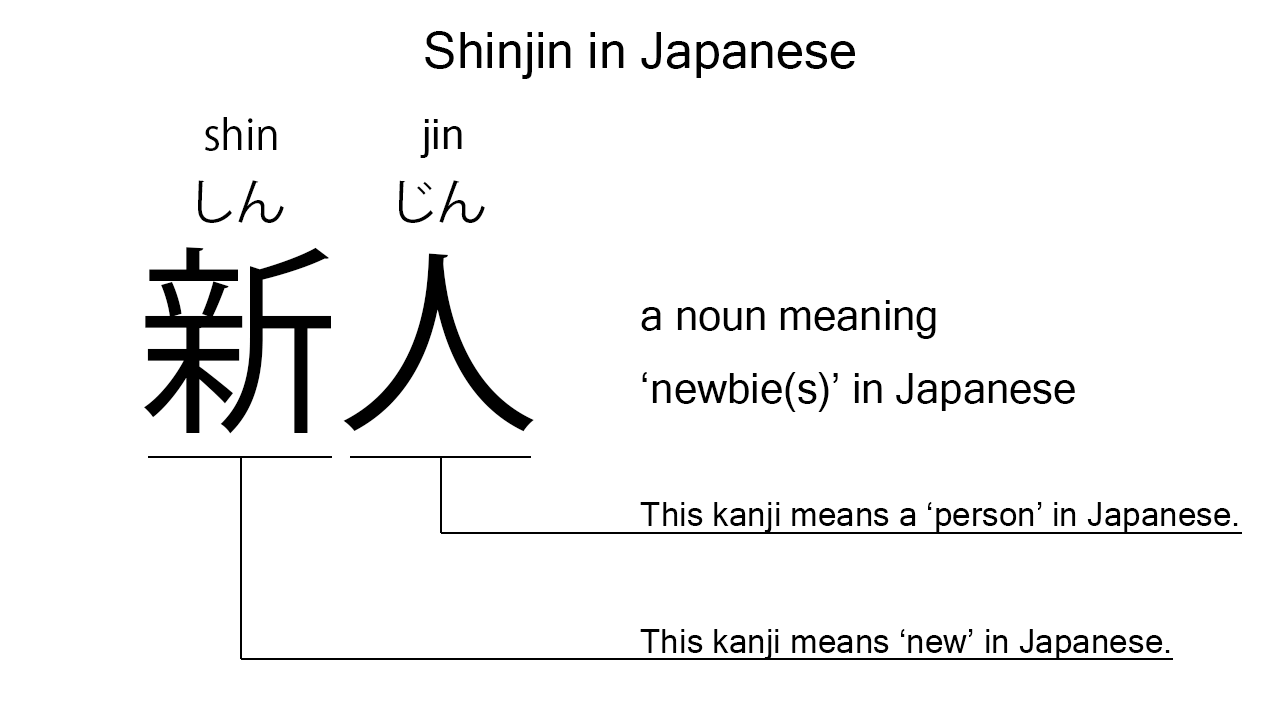What does “shinjin” mean in Japanese?
There are some homophones, but native speakers say “shinjin” often to mean a ‘newbie’ in Japanese. Perhaps, some Japanese learners know this word as it is sometimes used in Japanese movies, novels, manga, anime, and the like. In this blog post, however, I will explain this word in detail based on its kanji expression. And also, I will explain how to use it through example sentences. My explanations would help Japanese learners understand “shinjin” more clearly. Then, let’s get started!
Contents
Definition and meanings of “shinjin”
Let me start with the definition and meanings of “shinjin”.
- shinjin – 新人 (しんじん) : a noun meaning ‘newbie’ in Japanese. Depending on the context and situation, this can also mean ‘new comer’, ‘novice’, or ‘beginner’. This can also work as plural. Learn more about Japanese plural.
The definition and meanings are not that difficult. The meanings seem to be based on the same concept. To understand this noun more clearly, however, let me explain its kanji characters in detail, one by one.
Shinjin in kanji
The kanji expression of “shinjin” consists of the following two kanji characters:
- 新 : a kanji character used to mean ‘new’ in Japanese.
- 人 : a kanji character used to mean ‘person’ in Japanese.
These two kanji characters tell us that the formed noun literally means a ‘new person’ in Japanese. This literal interpretation is not completely in line with the actual meanings, but still understandable, I think. Newbies are often people who are new to something.

When we meet new kanji expressions, we should check their kanji characters in detail to understand their meanings clearly and deeply. In many cases, kanji characters tell us a lot about the meanings of the expressions they form. Actually, here, we could get the better understanding of “shinjin” through the detailed kanji check above.
So far, I’ve explained the definition and meanings of “shinjin” together with its kanji characters. Then, let me explain how to use it through the example sentences below.
Example #1: how to say “newbie” in Japanese
watashi wa mada shinjin desu – 私はまだ新人です (わたしはまだしんじんです)
I’m still a newbie.
Below are the new words used in the example sentence.
- watashi – 私 (わたし) : a pronoun meaning ‘I’ in Japanese.
- wa – は : a binding particle working as a case marker or topic marker. In the example, this works after “watashi” to make the subject in the sentence.
- mada – まだ : an adverb meaning ‘still’ or such in Japanese.
- desu – です : an auxiliary verb used after a noun or adjective to make it polite. Probably, this is well known as a part of Japanese desu form. In the example, this is used after “shinjin” to make it sound polite.
This is a typical usage of “shinjin”. In this example, it works as the complement in the sentence.
Example #2: another usage of “shinjin”
kanojo wa maitoshi koko de shinjin wo kitaeru – 彼女は毎年ここで新人を鍛える (かのじょはまいとしここでしんじんをきたえる)
She trains newbies here every year.
Below are the new words used in the example sentence.
- kanojo – 彼女 (かのじょ) : a pronoun meaning ‘she’ in Japanese.
- maitoshi – 毎年 (まいとし) : a noun meaning ‘every year’ in Japanese. This can also work as an adverb almost anywhere in a sentence. In the example, this works as an adverb in the middle of the sentence to mean ‘every year’ in Japanese.
- koko – ここ : a pronoun used to refer to a place close to the speaker.
- de – で : a case particle used to say where someone does something. In the example, this is used after “koko” to say “here” in Japanese.
- wo – を : a case particle used to make the object word in a sentence. In the example, this is used after “shinjin” to make the object in the sentence.
- kitaeru – 鍛える (きたえる) : a verb meaning ‘to train’ in Japanese.
This is another typical usage of “shinjin”. In this example, it works together with the case particle, “wo”, to become the object in the sentence. When we want to mean a ‘newbie’ or ‘newbies’ in Japanese, anyway, this noun is a good option.
Summary
In this blog post, I’ve explained the definition and meanings of “shinjin” in detail based on its kanji expression. And also, I’ve explained how to use it through the example sentences. Let me summarize them as follows.
- shinjin – 新人 (しんじん) : a noun meaning ‘newbie’ in Japanese. Depending on the context and situation, this can also mean ‘new comer’, ‘novice’, or ‘beginner’. This can also work as plural. These two kanji characters literally mean a ‘new person’ in Japanese. This literal interpretation is not completely in line with the actual meanings, but still understandable, I think. Newbies are often people who are new to something.
Hope my explanations are understandable and helpful for Japanese learners.